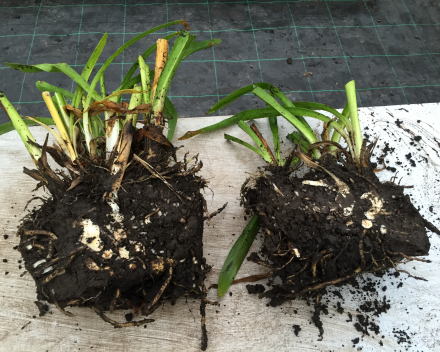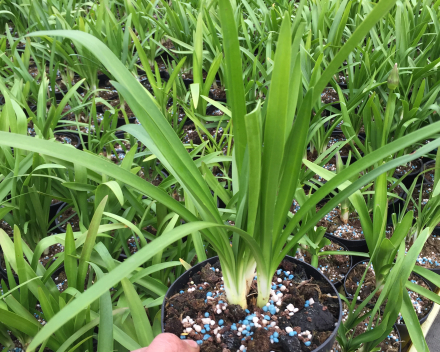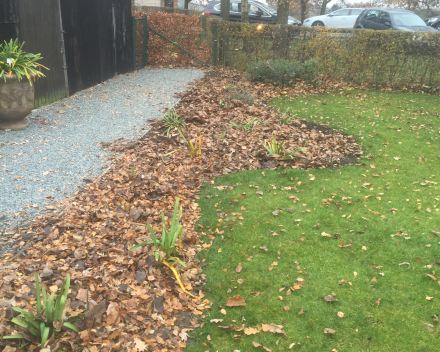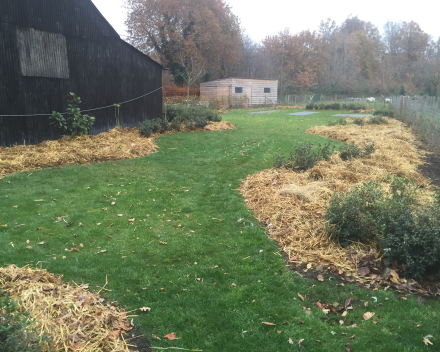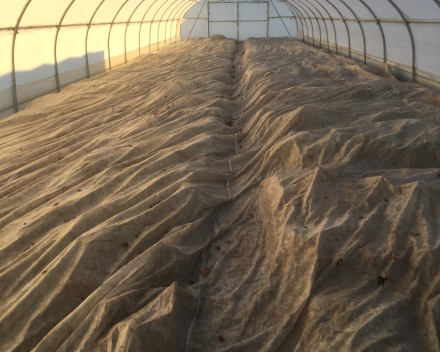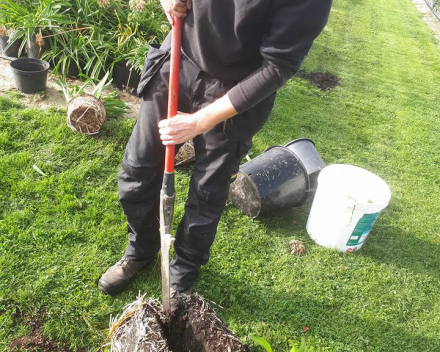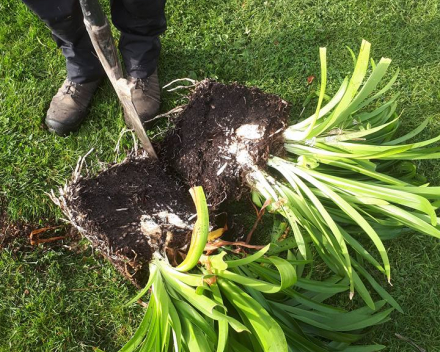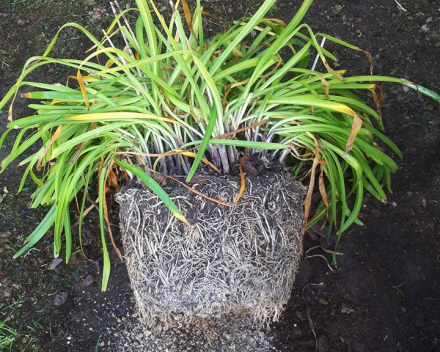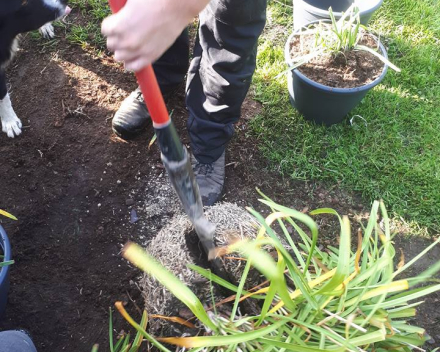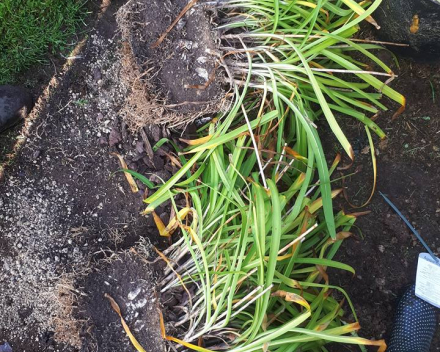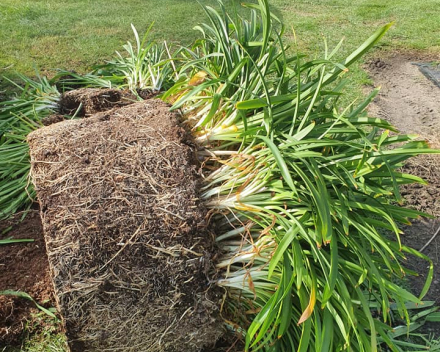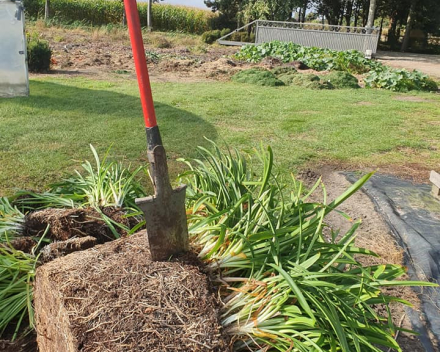- Home
- Agapanthus
- Agapanthus care
Agapanthus care
Basic rules:
1. Give the Agapanthus an open sunny location.
2. Always provide the necessary drainage: Agapanthus does NOT like wet feet, especially in winter!
- in heavy soil - add gravel or argex grains
- add sufficient compost in sandy soil
- in pot, always provide a good drainage layer at the bottom
3. When planting (transplanting) in pots, use a somewhat heavier soil type and good gravel drainage layer. This ensures that your plant will not fall over with the least breath of wind (a good alternative is to place a heavy stone at the bottom of the pot).
4. Repotting every year is out of the question. Always put the plant in a sufficiently large pot from the outset, do not use pots that are too expensive, because the sturdy roots and rhizomes often tense up in such a way that the pot cannot be released after a few years. Also forget the myth that Agapanthus would do better in a pot that is too small, this is not true.
5. Ensure that the Agapanthus receives sufficient fertilizer. Preferably use a fertilizer with a low nitrogen content and sufficient phosphorus and potassium. Use this fertilizer in early spring, after removing winter protection and at the end of August at the end of the flowering period (or give it in a slightly smaller dose). This bonus at the end of the summer stimulates the development of flower buds for next season. Organic fertilizer mix for Agapanthus: € 2.5 / kg. duration of operation (= 2-3 months). Agapanthus coated fertilizer (duration of action 6 months): € 7.5 / kg
6. Agapanthus is NOT completely hardy, both the evergreen and deciduous species must be protected in our climate zones. Winter hardiness, after all, is always a relative concept for plants depending on the soil, proximity to buildings, wind protection, location, microclimate in the garden and the extra winter protection that we offer our plants ourselves. It is true that many of our deciduous species can tolerate quite a bit of frost at the right location. Providing light coverage, this is not a major problem in our regions.
7. Evergreen Agapanthus should be stored frost-free in a light place, for example in the cold greenhouse: temperature between 2 and 8 degrees.
8. Deciduous Agapanthus can withstand a few degrees of frost (-5 max), therefore with severe frost in the garden: cover the plant with a substantial layer of straw, then plastic or bubble wrap and some sand or sand bags to prevent it from blowing away. You can protect pot plants with bubble wrap. In more temperate regions with less frost it is initially sufficient to protect the plants with a fleece cloth and to temporarily apply an extra layer of bubble wrap in the event of a brief larger frost.
9. Remove winter protection in time (but not too early), as soon as the long periods of frost are over, a lighter winter protection with just a fleece cloth will suffice. If the Agapanthus remains covered for too long, weak and weak young shoots will develop.
10. To water. It sounds easy, but it really isn't. When is the plant thirsty, when do you give your Agapanthus too much water? We see that many mistakes are made. There is no golden rule either. Much depends on the weather conditions and the size of the pot the plant is in. If a plant still has enough space, and therefore also potting soil in the pot, you need to water much less than if a plant is fully rooted in the pot. Then the potting soil can no longer absorb water. A general rule is that during the growing season, the Agapanthus can be given quite a bit of water. If you go on leave for a week, the plant can sometimes skip a watering, an Agapanthus will not be bothered by this. In open ground only water in extreme drought (as we have known in recent years).
11. Remove flower stems after flowering. I get a lot of questions about this every year. You can do this if the seed pods look a bit messy + you are also going to save some energy that would normally go to seed formation. But I personally like the seed pods very much, and therefore leave them on the plant. You will again get beautiful structures that are graceful all autumn. Some seed pods will discolour themselves nicely. It does cost the plant some energy, but with proper care the plant will not be too bothered by it.
12. Devide your agapanthus. This is necessary to keep your Agapanthus plants young and vigorous. The most common reason that an Agapanthus will no longer flower is because it has not been torn for far too long. Especially when it has been in the same pot for years. In principle, you can do tearing at two times of the year. Both in the autumn and in the spring. My preference is for the autumn, because then you still have plenty of growth, and the plant can still recover until winter. The ideal period is as soon as possible after flowering. August-September-early October. A second period is between mid-March and mid-May. The plant is in full growth, so it will also recover quickly. The flower bud here should already be well developed and in many cases would flower again the same year. You can easily split a heavy Agapanthus into six parts, depending on the size of the plant. Tearing an Agapanthus should be done once every 4-6 years. Especially in pots.

